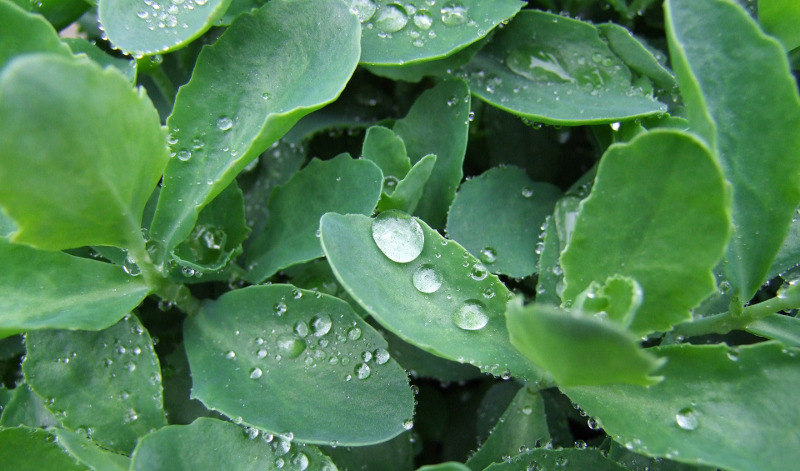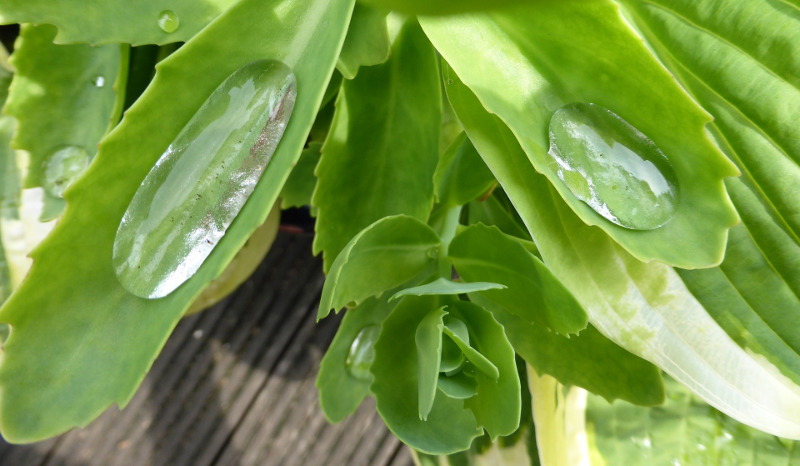Sedum (Stonecrop) is a plant in the succulent family. Succulents have thick, fleshy leaves that help to make it drought resistant. Sedums store water in its leaves, stems, or roots which makes it easy for the plant to survive long periods between watering. This does not mean that sedums do not require water.
All plants need water to grow and thrive, and sedums need to be watered regularly. Although sedums will grow in harsh, dry conditions, you will want to keep the plant thriving with just enough water, yet not too much. An overwatered sedum will die a lot faster than an underwatered one.

How To Tell If Sedum Needs Watered
The important thing to look at when deciding whether to water sedum is the soil. If the top inch of the soil feels dry, then it needs a drink of water. Sedums have thick fleshy leaves that store water. The first sign that the sedum is in desperate need of water is if the plant starts to look wilted and droopy. Its leaves will lose their plumpness from lack of water. The plant may also begin to drop some leaves and some leaves at the base of the plant will dry out.
How Often To Water Sedum
Whether planted in a pot or in a garden area, newly planted sedum will require a thorough watering. Once established, water when the top inch of soil feels dry.
Sedum are drought tolerant and thrive in well drained soil. It is best to give the plant a good slow drink and allow the soil to dry out again before the next watering. Stonecrops grow best with full sun and a dry climate. During the hot summers, plan to water every 7-10 days. Water every 2-3 week in the fall and winter.

Watering needs of container sedums depends on a few factors. Based on rainfall, an outdoor container may not need any watering; whereas, an indoor container will need weekly watering. A large container will hold more moisture and need less watering versus a small or shallow container. Give the sedum a long drink until the water trickles out of the drainage holes. Allow the soil to dry out before the next watering. A good rule is to check the soil once a week.
Best Time To Water Sedum
It is best to water sedum based on the dryness of the soil. During the spring and summer active growth, you will get better blooming with weekly watering. Less watering will be needed during the fall and winter months.
Overwatering Sedum
Whether growing in a container or in a garden, sedums can be easily overwatered. An overwatered sedum will die a lot faster than an underwatered one. Stonecrop leaves will tell you if it is being overwatered. Soft mushy leaves and wilting is the first sign of overwatering. If the leaves are turning black, the sedum is beginning to rot from too much water.
Another sign that the plant is in trouble is when the leaves swell up and drop off of the plant. Stop all watering allow the soil to completely dry out.

How to Water Sedum
Step 1 - Check the dryness of the soil.
If the soil is dry to the touch one inch down, the sedum needs a drink.
Step 2 - Water thoroughly.
A long slow drink is better than frequent short drinks. Water a potted plant until water trickles out of drainage holes.
Step 3 - Allow the soil to completely dry out.
Wet soil can cause root rot. During rainy periods do not water at all. May need to protect the plant from rain.
Sedum Watering Tips
- Allow soil to dry out between waterings
- Underwatering is better than overwatering
- Slow, thorough watering is best
- Avoid watering the leaves
- Plant in a pot with drainage holes
 |
Author Chris Link - Published 01-28-2021 |
